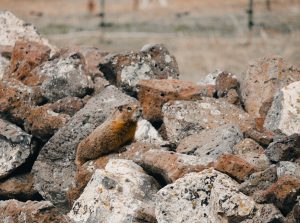A pest is any living organism that is deemed troublesome to plants, animals, humans, livestock, or human structures. The Ada County Pest Abatement District is tasked with minimizing the nuisances caused by pocket gophers and yellow-bellied marmots, or “rock chucks,” for Ada County Residents residing within the special taxing district. The Ada County Pest Abatement District was created in 1968 as a coordinated response to rampant damage that pocket gophers and rock chucks inflicted on irrigation canal banks, pastures and buildings due to their relentless tunneling.
The boundaries of the Pest Abatement District include all of Ada County, with the exception of municipalities, including: Boise, Meridian, Kuna, Garden City, Eagle and Star. To determine if you qualify for pest abatement services, look for “Pest Extermination” in your annual list of levies found on your property tax bill. You can also contact Ada County Pest Abatement at (208) 577-4646 with any questions. Please fill out a Request for Service form for to request treatment of pocket gophers or rock chucks within the special tax district.
 Controlling pocket gophers is the primary focus for Ada County Pest Abatement District staff. This “ongoing process” is time consuming due to the fact that gophers can dig tunnel systems that can extend from 200 to 2,000 feet, in length.
Controlling pocket gophers is the primary focus for Ada County Pest Abatement District staff. This “ongoing process” is time consuming due to the fact that gophers can dig tunnel systems that can extend from 200 to 2,000 feet, in length.
Gophers live below ground in their burrows. They are considered solitary animals, except during the mating season. They have special adaptations for their burrowing lifestyle, including clawed front paws for digging, small eyes and ears and sensitive whiskers and tails. They’re also able to close their lips behind their long incisors so they can use their teeth to loosen soil without getting any dirt in their mouths.
 Loose, sandy soil with edible plant cover is the best habitat for pocket gophers. Often this means pocket gophers make their homes in lawns and crop fields, much to the dismay of homeowners and farmers. Voracious pocket gophers can leave unsightly dirt mounds in yards, and they readily feed on ornamental garden plants. Pocket gophers can move a ton of soil to the surface, each year. They leave crescent-shaped mounds on the surface, with plugged tunnel entrances.
Loose, sandy soil with edible plant cover is the best habitat for pocket gophers. Often this means pocket gophers make their homes in lawns and crop fields, much to the dismay of homeowners and farmers. Voracious pocket gophers can leave unsightly dirt mounds in yards, and they readily feed on ornamental garden plants. Pocket gophers can move a ton of soil to the surface, each year. They leave crescent-shaped mounds on the surface, with plugged tunnel entrances.
Damage caused by gophers includes the destruction of underground utility cables and irrigation pipe, direct consumption and smothering of forage by earthen mounds, and change in species composition on rangelands by providing seedbeds (mounds) for invading annual plants. Gophers damage trees by stem girdling and clipping, root pruning and root exposure caused by burrowing. Gopher mounds dull and plug sickle bars when harvesting hay or alfalfa, and soil brought to the surface as mounds is more likely to erode. In irrigated areas, gopher tunnels can channel water runoff, causing loss of surface irrigation water. Gopher tunnels can weaken ditch banks and earthen dams, causing water loss by seepage and piping through a bank or the complete loss or washout of a canal bank.
The Yellow-bellied Marmot, or Rockchuck, is considered the largest of all the  ground squirrels. They can often be found living in rock or wood piles, and will even re-home to a crawl space or beneath a shed. They can cause severe damage by digging holes in irrigation canal banks, throughout pastures and along the sides of buildings. Rockchuck tunnel systems have been known to reach 30 to 230 feet, in length, and roughly 5-feet-deep.
ground squirrels. They can often be found living in rock or wood piles, and will even re-home to a crawl space or beneath a shed. They can cause severe damage by digging holes in irrigation canal banks, throughout pastures and along the sides of buildings. Rockchuck tunnel systems have been known to reach 30 to 230 feet, in length, and roughly 5-feet-deep.
The rock chuck uses its front feet and incisor teeth to loosen soil and chew through roots, which are pushed beneath its body. Once the material has accumulated, the chuck bulldozes the debris out of the entrance hole. This bare patch of the earth creates a good observation platform for it to survey its surroundings, but it also reveals the most conspicuous evidence of the chuck’s presence.
Rock chucks are herbivores, who will consume almost any garden grown vegetable. Their feeding and burrowing habits can conflict with human interests. Damage to crops such as alfalfa, soybeans, beans, squash and peas can be costly and extensive. Gnawing on underground power cables has caused electrical outages. Rock chucks can damage rubber hoses in vehicles (i.e. vacuum and fuel lines). Mounds of earth from their burrow systems present a hazard to farm equipment, horses and riders. On occasion, rock chuck burrowing can even weaken dikes and foundations.

